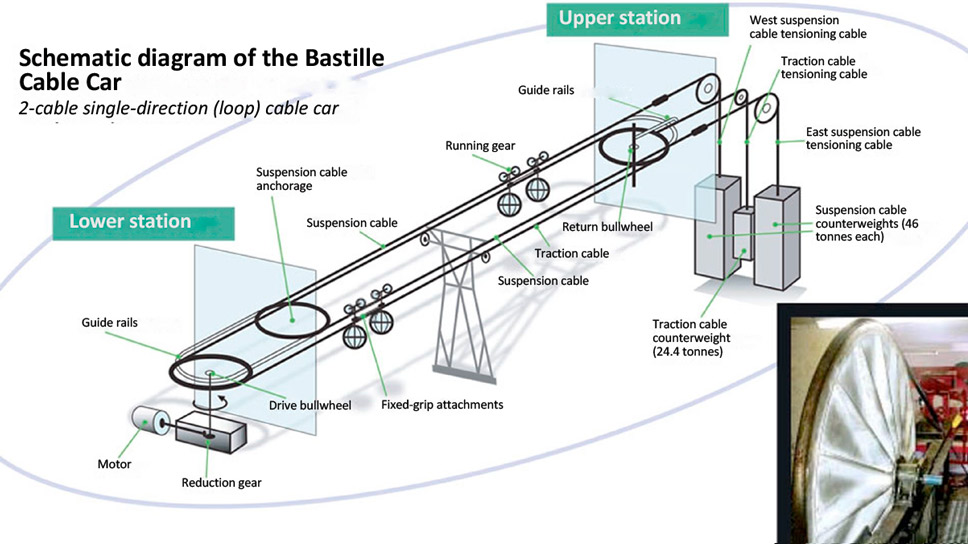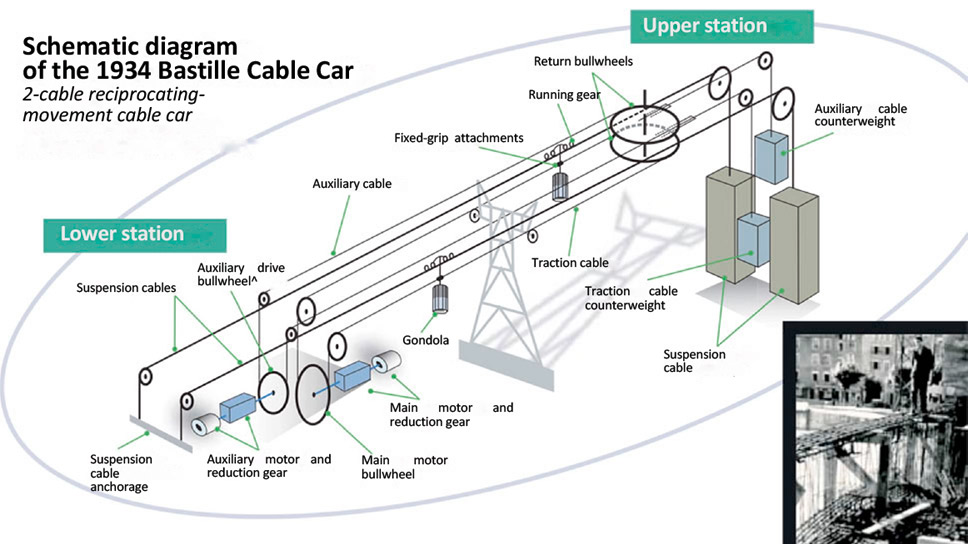Since 1976, the 2-cable single-direction cable car has been of the pulsed-movement type; this means that the gondolas are secured by fixed-grip attachments to the traction cable and roll on the suspension cable, slowing down as they pass through the stations.
The gondolas are supported by trolleys that move along the suspension cables (one « up » and one « down »). Counterweights in the top station are used to maintain cable tension (46 tonnes for the suspension cables and 24.4 tonnes for the traction cable).

The 1934 cable car used a back-and-forth system with each gondola running on its own suspension cable. This was an effective way of saving energy.
While the gondolas are drawn by a traction cable, the weight of the descending gondola partially offsets the effort needed to draw the ascending gondola upwards.



